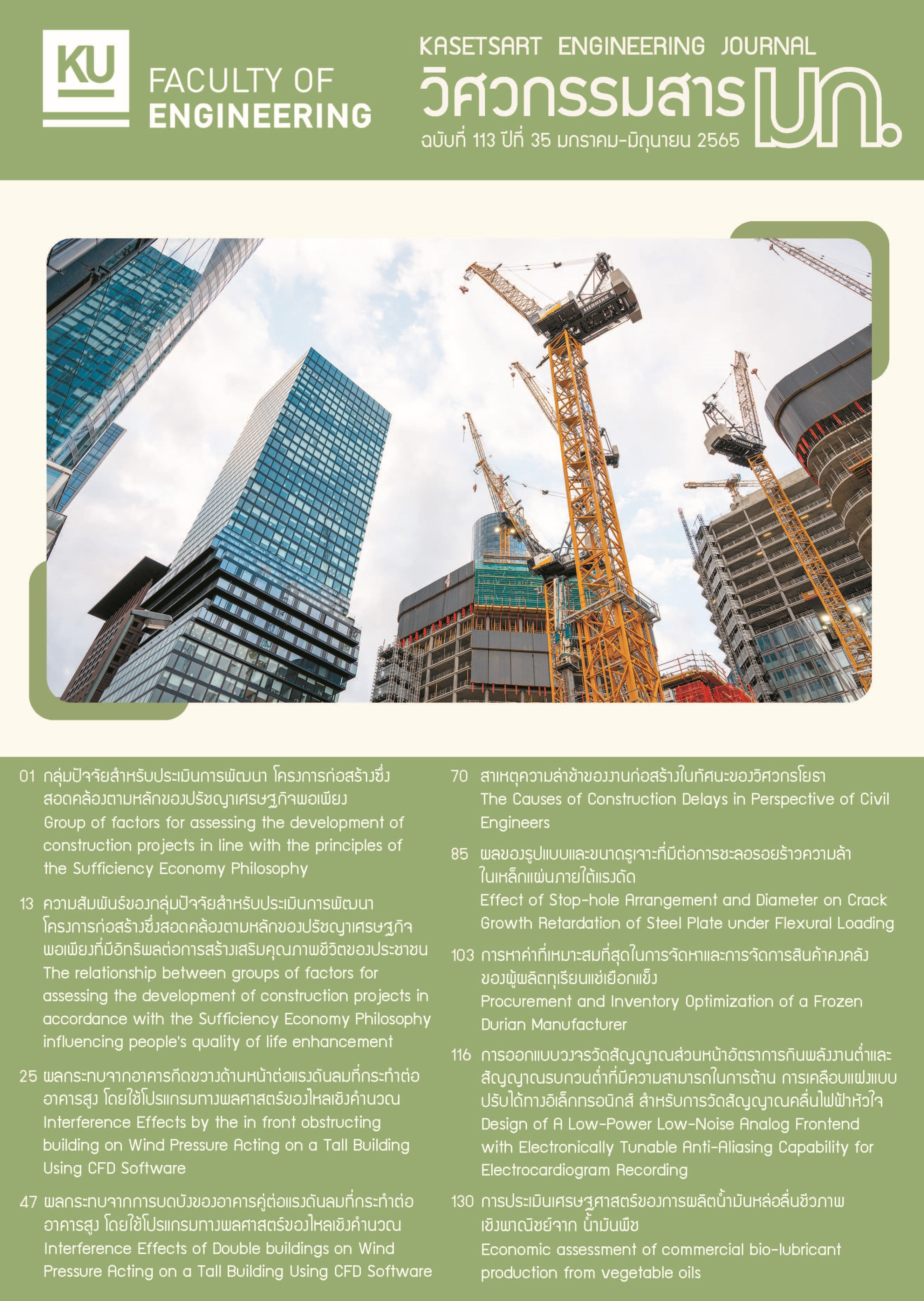Design of A Low-Power Low-Noise Analog Frontend with Electronically Tunable Anti-Aliasing Capability for Electrocardiogram Recording
Keywords:
Analog Frontend, Electrocardiogram, Low-power, Anti-aliasing filter, low-power integrated circuitAbstract
This paper presents the design of a low-power low-noise chopped analog frontend (AFE) for wearable electrocardiogram recording devices. The AFE has an embedded anti-aliasing filter without the need of an additional lowpass filter, which saves the chip area and overall power consumption without significantly increasing the AFE’s input-referred noise. The AFE’s cutoff frequency can be tuned to the minimum value of 200 Hz via electronically tuning a resistance value with the duty-cycle resistance technique. Designed and fabricated in a 180-nm CMOS process, the AFE, operating from a 1.2-V supply voltage and occupying an area of 0.55 mm2, provides a gain of 20 V/V, consumes 2.32 µW of power, and exhibits an input-referred noise of 1.6 µVrms integrated from 1-250 Hz.
References
แสงทอง จ. (2017). สังคมผู้สูงอายุ (อย่างสมบูรณ์): ภาวะสูงวัยอย่างมีคุณภาพ. RUSAMILAE JOURNAL, 38(1), 6–28.
The World Health Organization (2021). Cardiovascular Diseases (CVDs).
https://www.who.int/news-room/fact-sheets/detail/cardiovasculardiseases-(cvds).
Jun. 2021
Abramson J H, Gofin R, Hopp C, Gofin J, Donchin M, and Habib J (1981). Evaluation of a community program for the control of cardiovascular risk factors: the CHAD
program in Jerusalem. Israel journal of medical sciences, 17(2-3): 201–212.
Censi F, Calcagnini G, Mattei E, Gargaro A, Biancalana G, and Capucci A (2013). Simulation of monitoring strategies for atrial arrhythmia detection. Annali dell'Istituto superiore di sanita, 49(2): 176–182.
Bansal A, and Joshi R (2018). Portable out-of-hospital electrocardiography: A review of current technologies. Journal of arrhythmia, 34(2): 129–138.
Mohebali D, and Kittleson M M (2021). Remote monitoring in heart failure: current and emerging technologies in the context of the pandemic. Heart (British Cardiac Society), 107(5): 366–372.
Prieto-Avalos G, Cruz-Ramos N A, Alor-Hernández G, Sánchez-Cervantes J L, Rodríguez-Mazahua L, and Guarneros-Nolasco L R (2022). Wearable Devices for Physical Monitoring of Heart: A Review. Biosensors, 12(5): 292.
ANSI/AAMI EC11 (2001). Diagnostic Electrocardiographic Devices.
Fan Q, Sebastiano F, Huijsing J H, and Makinwa K A (2011). A 1.8- µW 60 nv/√Hz capacitively-coupled chopper instrumentation amplifier in 65-nm CMOS for wireless sensor nodes. IEEE Journal of Solid-State Circuits, 46: 1534-1543.
Chandrakumar, Hariprasad & Markovic, Dejan (2017). A High Dynamic-Range Neural Recording Chopper Amplifier for Simultaneous Neural Recording and Stimulation. IEEE Journal of Solid-State Circuits. PP. 1-12. 10.1109/JSSC.2016.2645611.
Bai, Wenbin & Zhu, Zhangming & Li, Yani & Liu, Lianxi. (2018). A 64.8μW >2.2GΩ DC-AC Configurable CMOS Front-End IC for Wearable ECG Monitoring. IEEE Sensors Journal. PP. 1-1. 10.1109/JSEN.2018.2809678.
Liu, Lianxi & Hua, Tianyuan & Zhang, Yi & Junchao, Mu & Zhu, Zhangming. (2019). A Robust Bio-IA with Digitally-Controlled DC-Servo Loop and Improved Pseudo-Resistor. IEEE Transactions on Circuits and Systems II: Express Briefs. PP. 1-1. 10.1109/TCSII.2019.2922423.
Song, Shuang & Rooijakkers, Michael & Harpe, Pieter & Rabotti, Chiara & Mischi, Massimo & Roermund, Arthur & Cantatore, E.. (2015). A Low-Voltage Chopper-Stabilized Amplifier for Fetal ECG Monitoring With a 1.41 Power Efficiency Factor. IEEE transactions on biomedical circuits and systems. 9. 10.1109/TBCAS.2015.2417124.
Rijnbeek, Peter & Kors, Jan & Witsenburg, Maarten. (2002). Minimum Bandwidth Requirements for Recording of Pediatric Electrocardiograms. Circulation. 104. 3087-90. 10.1161/hc5001.101063.
Downloads
Published
Issue
Section
License

This work is licensed under a Creative Commons Attribution-NonCommercial-NoDerivatives 4.0 International License.


